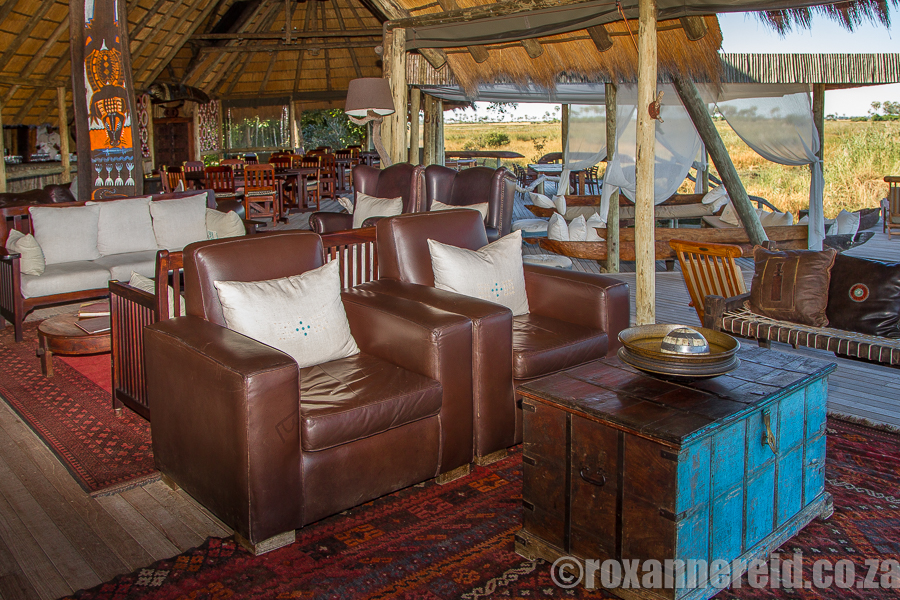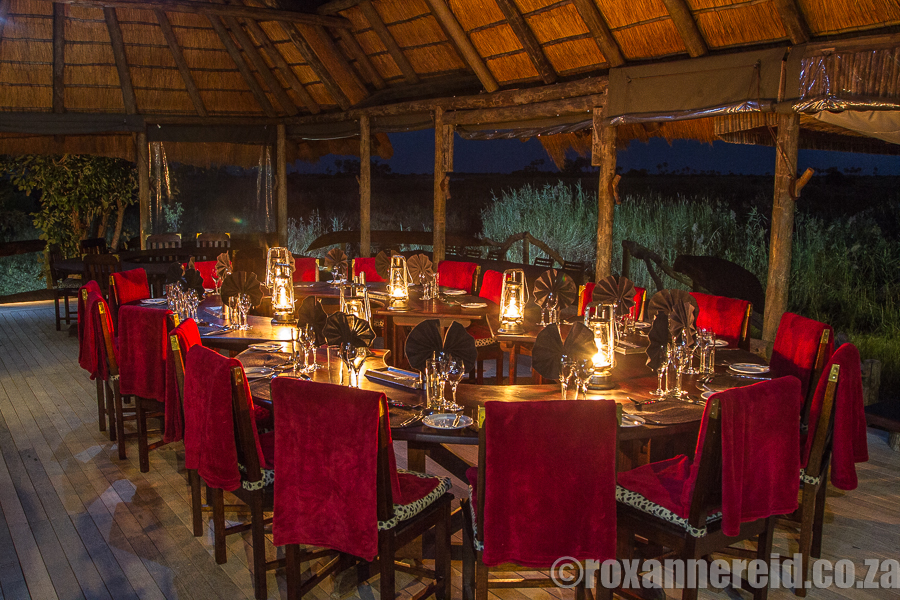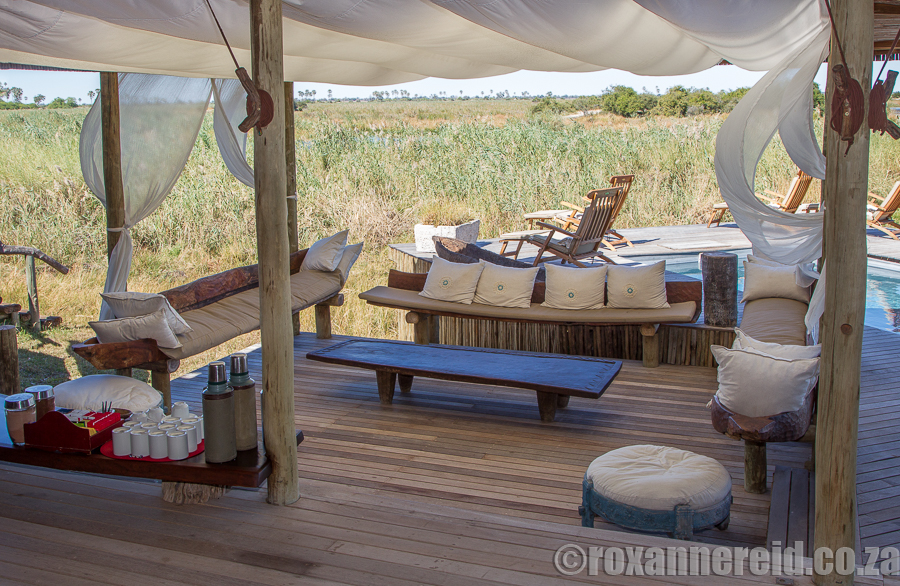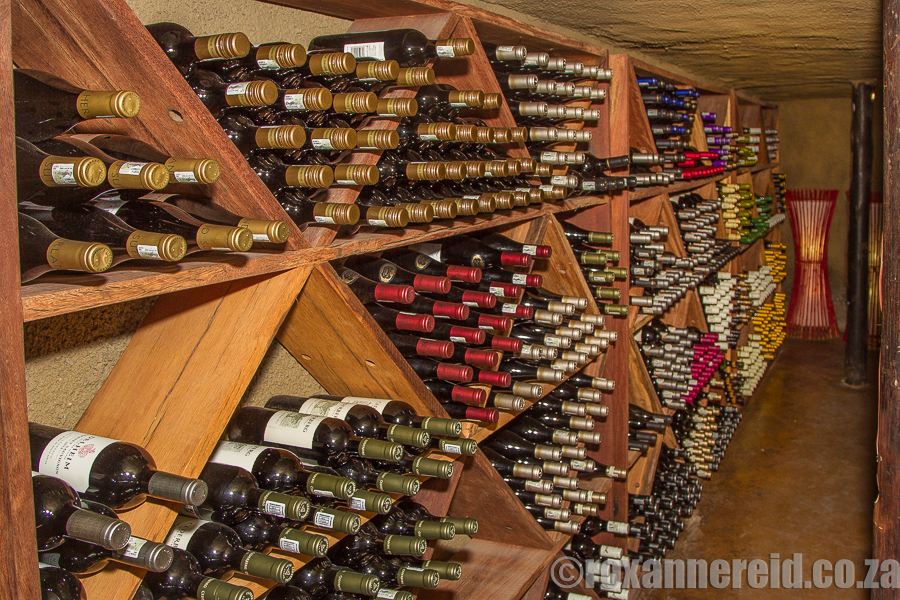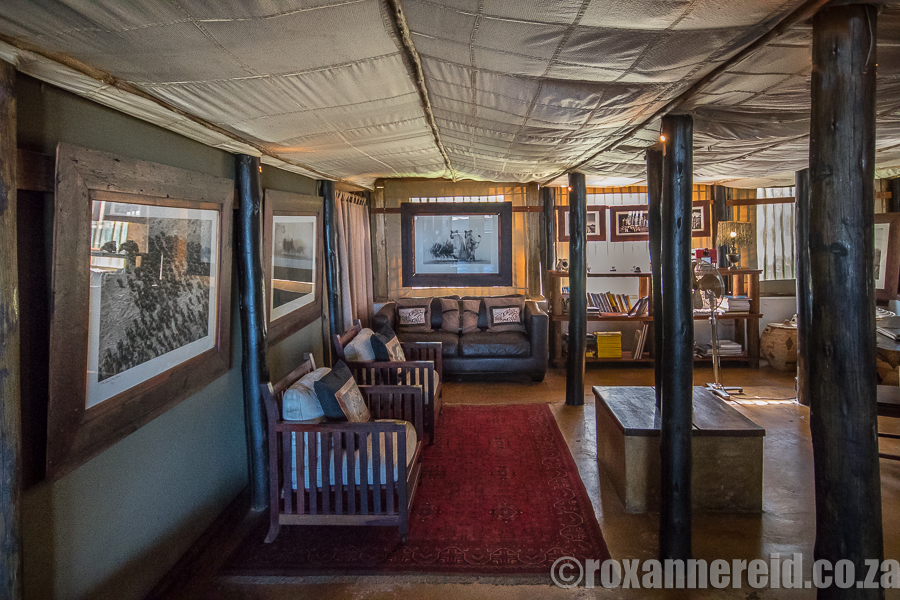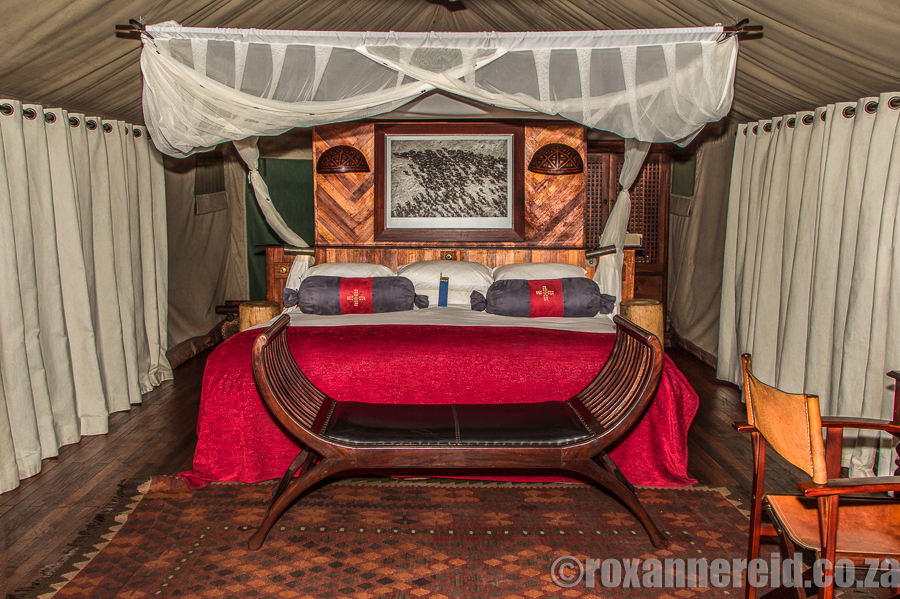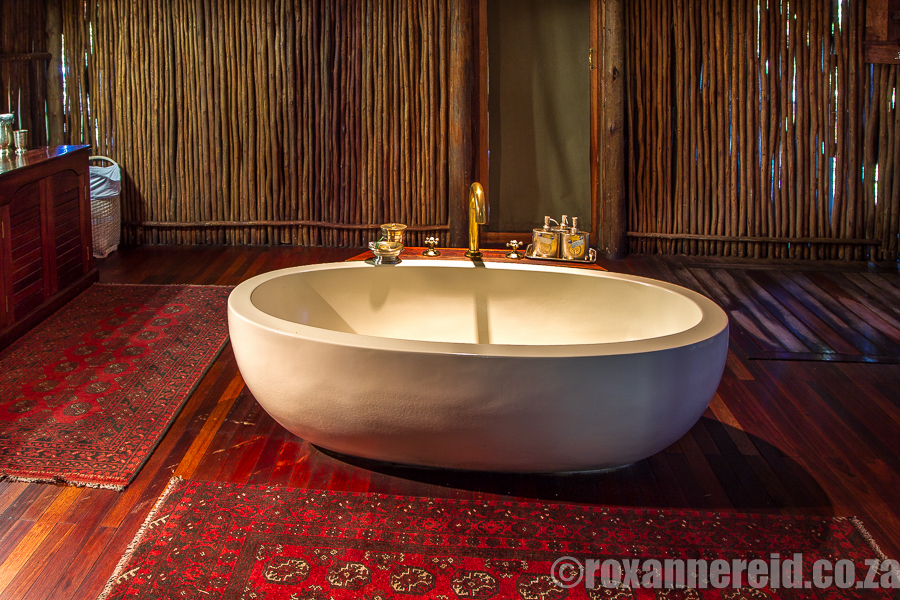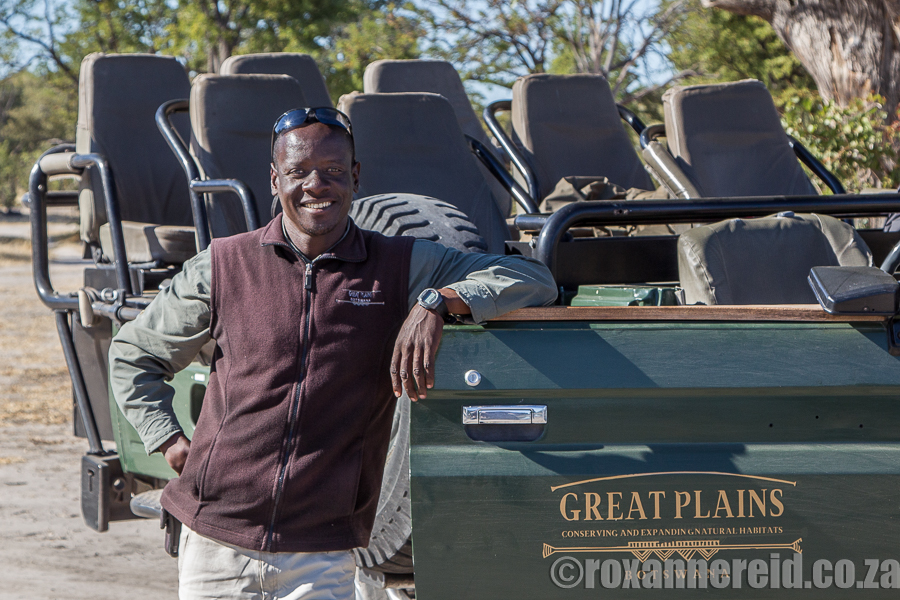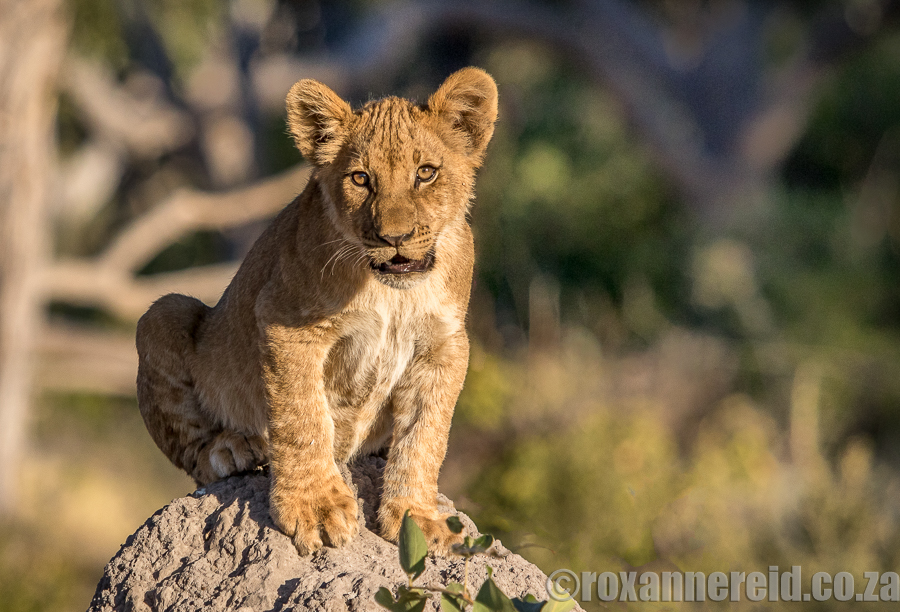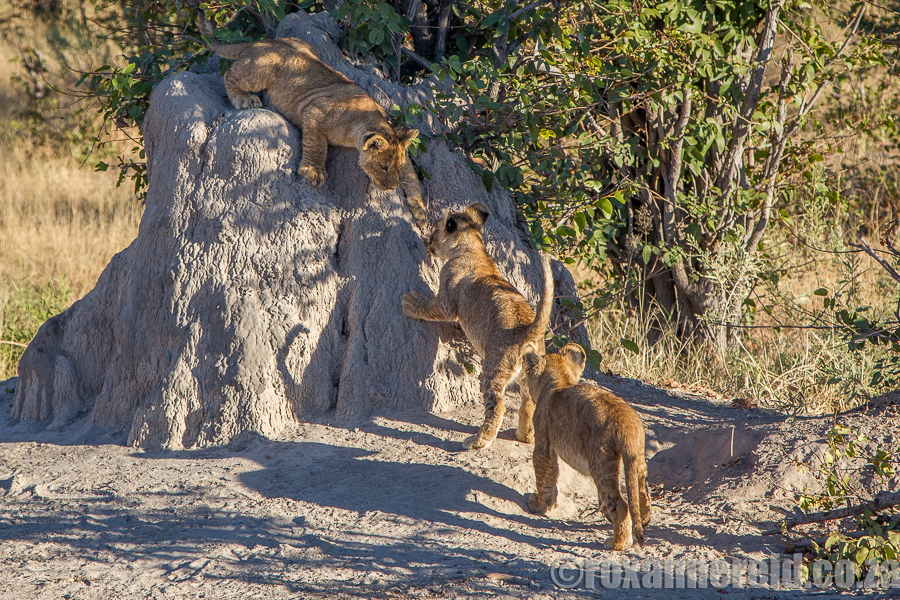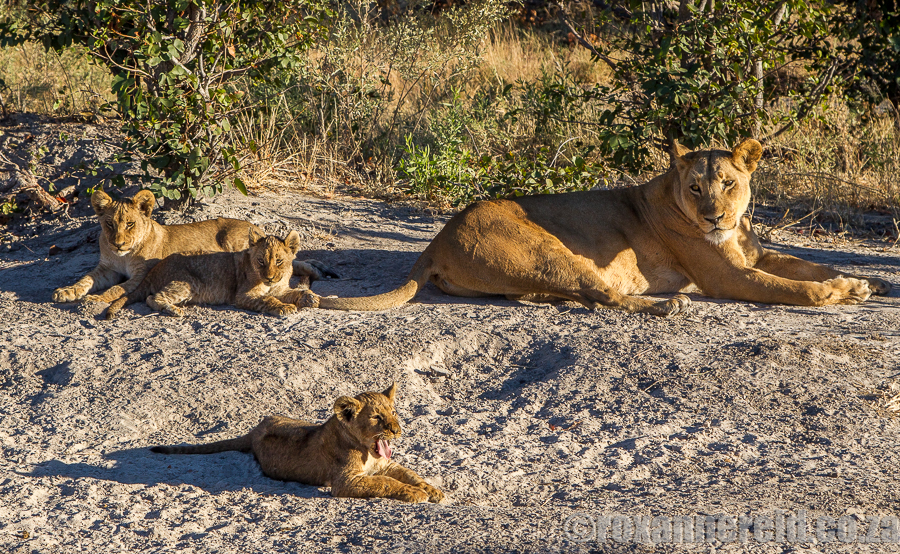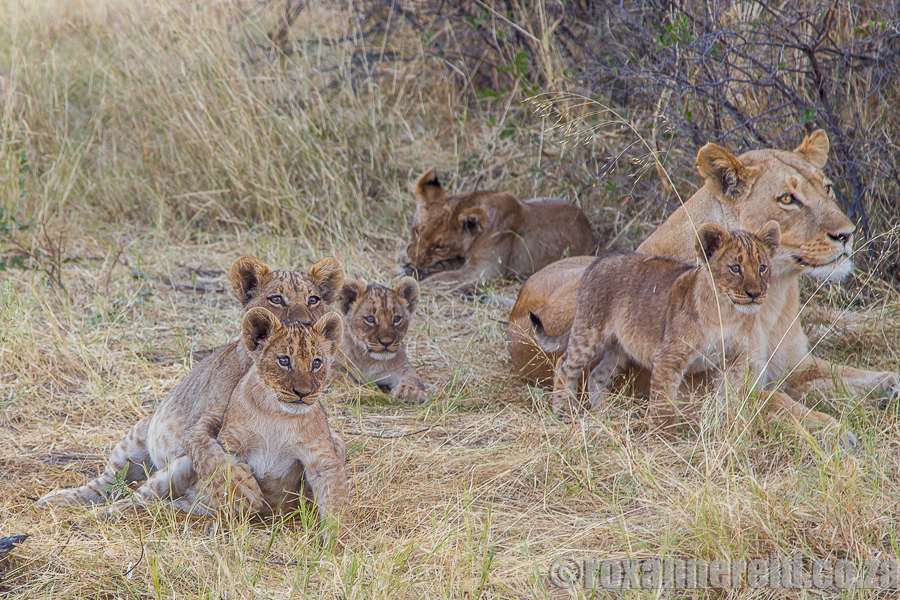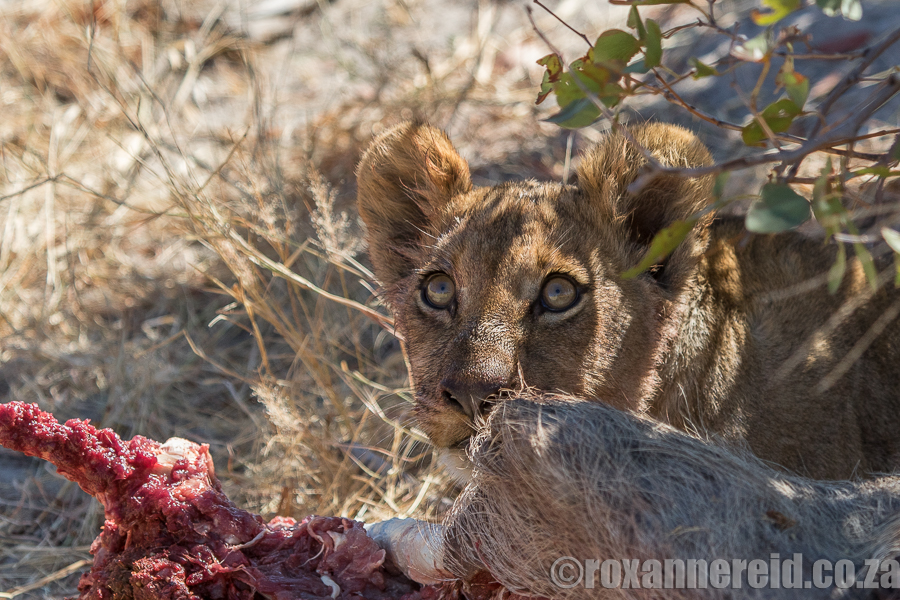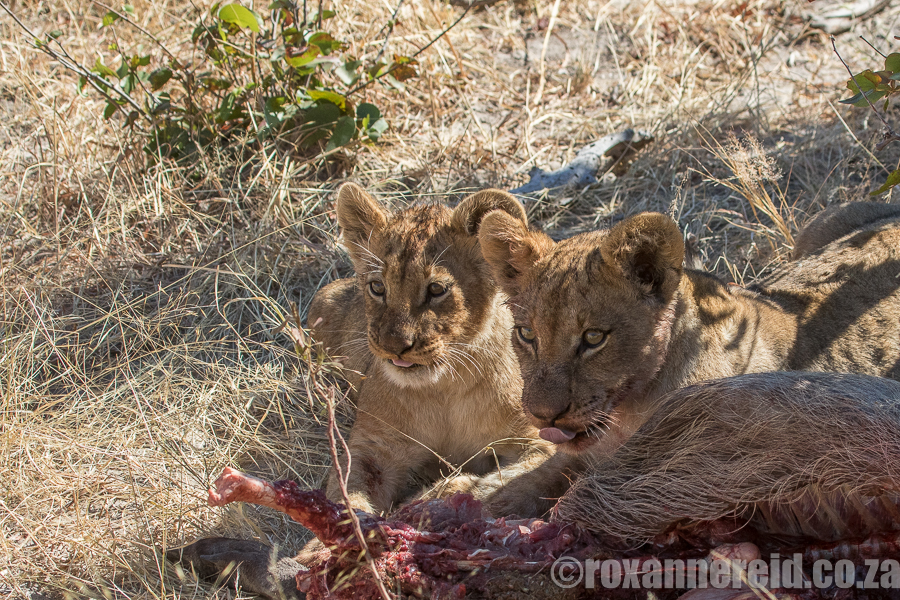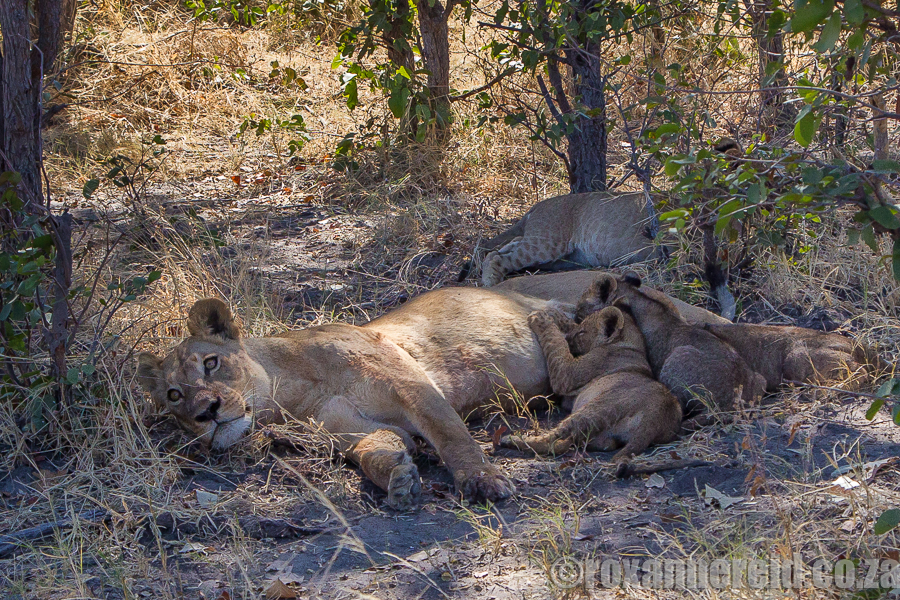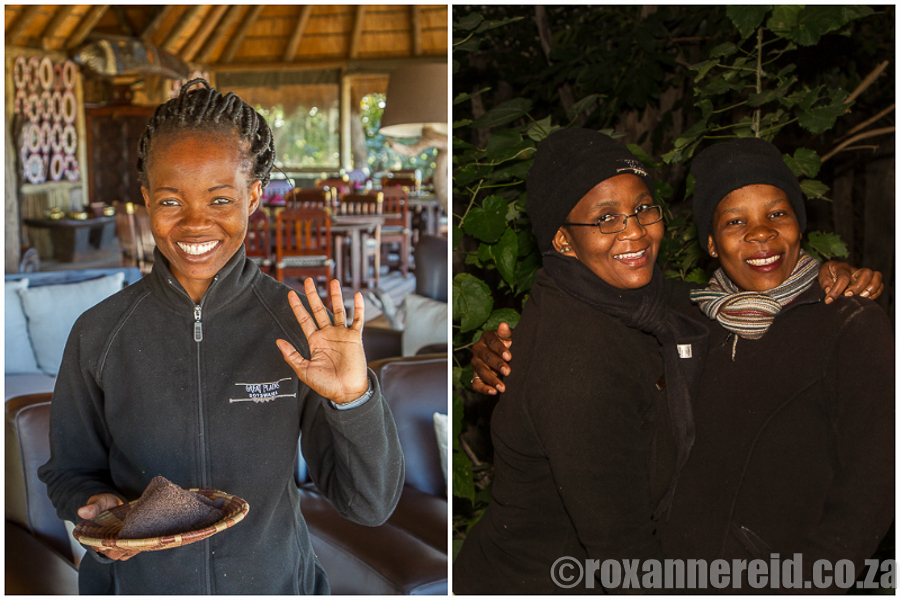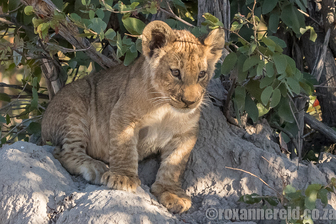
By Roxanne Reid
The Selinda Spillway in the Linyanti gets water from both the Okavango in the south and the Linyanti wetlands in the west. Here you’ll find large herds of elephant and buffalo, as well as a healthy population of wild dogs. But our first day at Selinda Camp in this wilderness in northern Botswana was all about lions and their cubs.
The Selinda Spillway in the Linyanti gets water from both the Okavango in the south and the Linyanti wetlands in the west. Here you’ll find large herds of elephant and buffalo, as well as a healthy population of wild dogs. But our first day at Selinda Camp in this wilderness in northern Botswana was all about lions and their cubs.
Selinda Camp is the creation of Great Plains Conservation wildlife film-makers, photographers and conservationists Dereck and Beverly Joubert. At its heart is a large thatched structure overlooking the Selinda Spillway where you can listen to fish-eagles call and hippos grumble. There are painted mokoros, an intricate carved door from Zanzibar and a mural of beadwork.
It has an airy feel, with wide open spaces and billowing muslin on the pool deck, a perfect setting for high tea before the afternoon game drive. There’s also a breakfast deck around a fire pit, a walk-in wine cellar and a gallery stocked with prints of Beverly’s photos.
Behind the scenes, the camp tries to be as environmentally non-invasive as possible, using natural building materials and solar energy. There’s even a biogas plant that recycles food waste into methane to use for cooking.
Our tent under thatch
Our tent was a sumptuous space with a large wooden deck overlooking the Spillway, where we could relax in the shade during the heat of the day. Inside was classic safari style, with a dark wood writing desk and tea chest, bright rugs and giant bed.
Our tent was a sumptuous space with a large wooden deck overlooking the Spillway, where we could relax in the shade during the heat of the day. Inside was classic safari style, with a dark wood writing desk and tea chest, bright rugs and giant bed.
But for me the romantic highlight was the freestanding oval bath in the middle of an enormous carpeted bathroom. The evenings were cool in early June so wallowing in a hot bath fit for Cleopatra was a welcome luxury.
The camp lies in the 130 000ha Selinda Reserve, a world of floodplains and woodland, with large fever-berry, mopane and Kalahari apple-leaf trees. We even found a knobthorn, bird plum and strangler fig all growing out of a single termite mound.
The excitement of lions
We woke before sunrise to the sound of coppery-tailed coucals and red-billed spurfowl, and joined our guides for muffins around the fire before leaving on the first game drive of the day.
The excitement of lions
We woke before sunrise to the sound of coppery-tailed coucals and red-billed spurfowl, and joined our guides for muffins around the fire before leaving on the first game drive of the day.
It wasn’t long before guide Donald Senase picked up fresh lion tracks to follow. We found two lionesses and six cubs about 30 minutes later, lying in the shade of a bush next to a termite mound. Donald estimated that three of the cubs were around four months old and the others about a month younger.
One lioness walked off, eyes fixed, perhaps sniffing out some prey. When she came back ten minutes later all the cubs squeaked and chirped to greet her as if she’d been gone forever. Since three of them weren’t her own, it was a reminder that cub care for lions is a communal activity.
One lioness walked off, eyes fixed, perhaps sniffing out some prey. When she came back ten minutes later all the cubs squeaked and chirped to greet her as if she’d been gone forever. Since three of them weren’t her own, it was a reminder that cub care for lions is a communal activity.
One of the bigger cubs climbed to the top of the termite mound. A second noticed its tail hanging down and gave it a sharp nip, but the first cub wasn’t giving up its position as King of the Termite Mound. The others played and rolled over, showing their freckled white tummies, vocalising and communicating like the social cats they are.
Then one of the smaller cubs hatched a cunning plan to take over from the mound king, scrambling up from the back through the middle of a bush where an attack wasn’t expected. The two were having a bit of a fisticuffs when a lioness bared her teeth at the first cub and yanked its tail so it tumbled down off the termite mound, leaving the smaller cub in smug possession.
Then one of the smaller cubs hatched a cunning plan to take over from the mound king, scrambling up from the back through the middle of a bush where an attack wasn’t expected. The two were having a bit of a fisticuffs when a lioness bared her teeth at the first cub and yanked its tail so it tumbled down off the termite mound, leaving the smaller cub in smug possession.
The rest continued to practise their tripping skills by batting at the legs of one another with their paws till they fell over. They stalked and grappled and ambushed, copying what they’d seen their mothers do, without really knowing why. It was good practice for when they were older and would have to start catching their own dinner.
After about an hour Donald asked what we wanted to do. The moms were still alert to every cracking twig and bird call, watching carefully. We would have liked to stay to see if they’d hunt one of the warthogs in the area, but our Canadian safari mates had seen the lions the day before and preferred to go off and see what else we could find.
After about an hour Donald asked what we wanted to do. The moms were still alert to every cracking twig and bird call, watching carefully. We would have liked to stay to see if they’d hunt one of the warthogs in the area, but our Canadian safari mates had seen the lions the day before and preferred to go off and see what else we could find.
Donald caught a glimpse of a spotted hyena moving through the bush so we bundu-bashed through tall yellow turpentine grass and around shrubs in search of it. No luck, it eluded us. We were secretly hoping for some wild dogs. A while later we stopped for coffee at the side of a large natural depression that collects rain. A few wildebeest and two lazy elephants came to drink. ‘By September,’ Donald said, ‘this waterhole will be dry.’
The radio crackled to life – a fellow-guide telling Donald the lions had killed a warthog at Star Pan. Drat, just what we’d thought would happen and now we’d missed the action.
The radio crackled to life – a fellow-guide telling Donald the lions had killed a warthog at Star Pan. Drat, just what we’d thought would happen and now we’d missed the action.
Back to the lion action
So back we went. We found the lions with bloody faces. One or two cubs were still feeding on the carcass, but most of the hind quarters were gone. Unlike males, who think they should be first at the trough whether they’ve made the kill or not, lionesses are good moms. If there’s enough food for all, they happily share with the little ones.
The cubs tugged on the white sinew, strong enough to move the carcass as they pulled. Two white-headed vultures swooped over and settled in a dead tree, startling the cubs off the carcass and back to their moms.
So back we went. We found the lions with bloody faces. One or two cubs were still feeding on the carcass, but most of the hind quarters were gone. Unlike males, who think they should be first at the trough whether they’ve made the kill or not, lionesses are good moms. If there’s enough food for all, they happily share with the little ones.
The cubs tugged on the white sinew, strong enough to move the carcass as they pulled. Two white-headed vultures swooped over and settled in a dead tree, startling the cubs off the carcass and back to their moms.
It was time to move the carcass to a more secluded spot. One lioness showed the strength of her neck as she dragged the carcass, still about three quarters of a full-grown warthog. She carried it past our vehicle and into the shade of some trees, hampered by one of the cubs hanging onto her bum with its fat paws and walking behind her on its back legs. Cubs are so comical. The other female stayed behind to paw at the ground, burying the stomach contents to stop vultures from smelling the kill.
Once everyone had eaten their fill, the bigger cubs went back to wrestling and playing tag, rolling over and biting each others’ tails. The younger ones suckled and dozed. Although all of them were already eating meat, they’d only be weaned at 7-9 months.
Once everyone had eaten their fill, the bigger cubs went back to wrestling and playing tag, rolling over and biting each others’ tails. The younger ones suckled and dozed. Although all of them were already eating meat, they’d only be weaned at 7-9 months.
Late afternoon nature
Our drive in the afternoon was calmer, more varied, as it usually is when lions don’t take centre stage. The vehicle cast long shadows on the blond grass as we found a feast of birds – bateleur, Dickinson’s kestrel, brown snake eagle, African marsh harrier, openbill stork, African jacana and purple heron. Red lechwe and hippos moved slowly in a marshy area, and a forest of leadwood tree skeletons caught the late afternoon sunlight.
We had drinks at a pan and watched the sunset bring the day to a close. I looked away from the wild orange histrionics of the western sky to the east and found a much gentler palette – grey-blue at the bottom, then narrower bands of lilac and pink, fading to yellow above. It was an echo of our wildlife sightings that day – high excitement with the lions in the morning and the mellow harmonies of our late afternoon encounters with nature.
Our drive in the afternoon was calmer, more varied, as it usually is when lions don’t take centre stage. The vehicle cast long shadows on the blond grass as we found a feast of birds – bateleur, Dickinson’s kestrel, brown snake eagle, African marsh harrier, openbill stork, African jacana and purple heron. Red lechwe and hippos moved slowly in a marshy area, and a forest of leadwood tree skeletons caught the late afternoon sunlight.
We had drinks at a pan and watched the sunset bring the day to a close. I looked away from the wild orange histrionics of the western sky to the east and found a much gentler palette – grey-blue at the bottom, then narrower bands of lilac and pink, fading to yellow above. It was an echo of our wildlife sightings that day – high excitement with the lions in the morning and the mellow harmonies of our late afternoon encounters with nature.
Note: I was a guest of Great Plains Conservation for two nights, but the opinions are mine.
You may also enjoy
Highlights of the Linyanti, Botswana
Copyright © Roxanne Reid - No words or photographs on this site may be used without permission from roxannereid.co.za
You may also enjoy
Highlights of the Linyanti, Botswana
Copyright © Roxanne Reid - No words or photographs on this site may be used without permission from roxannereid.co.za
